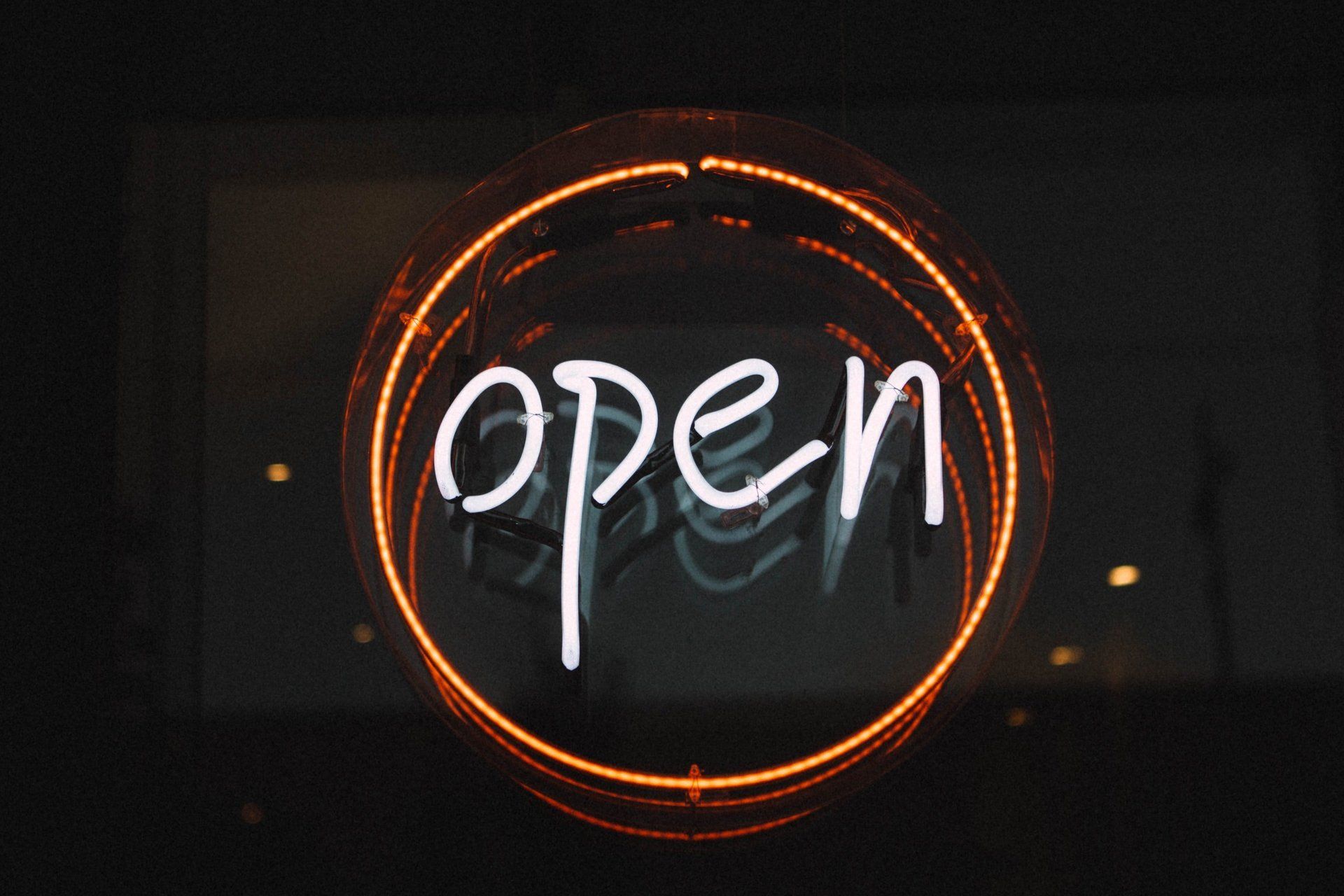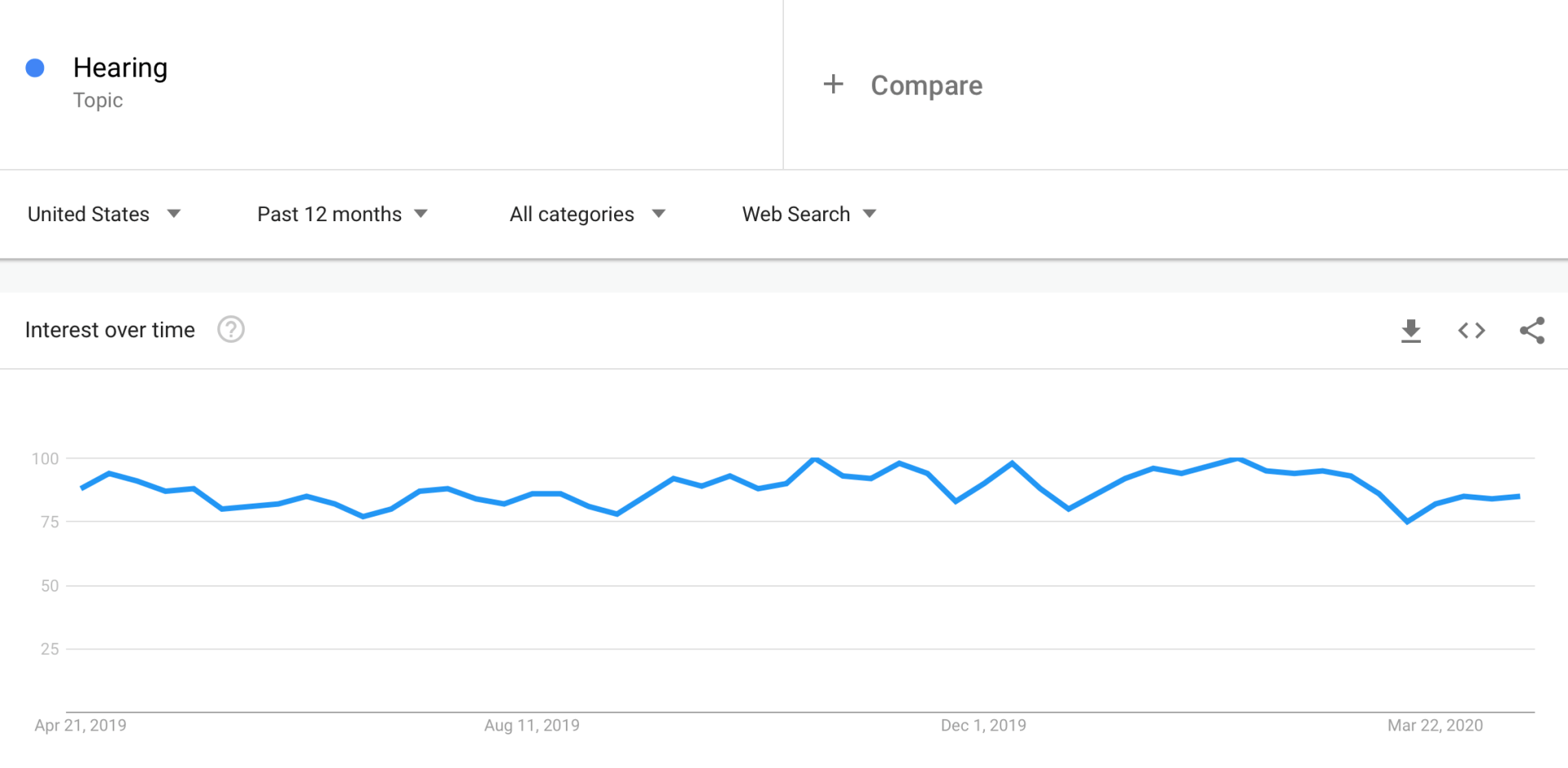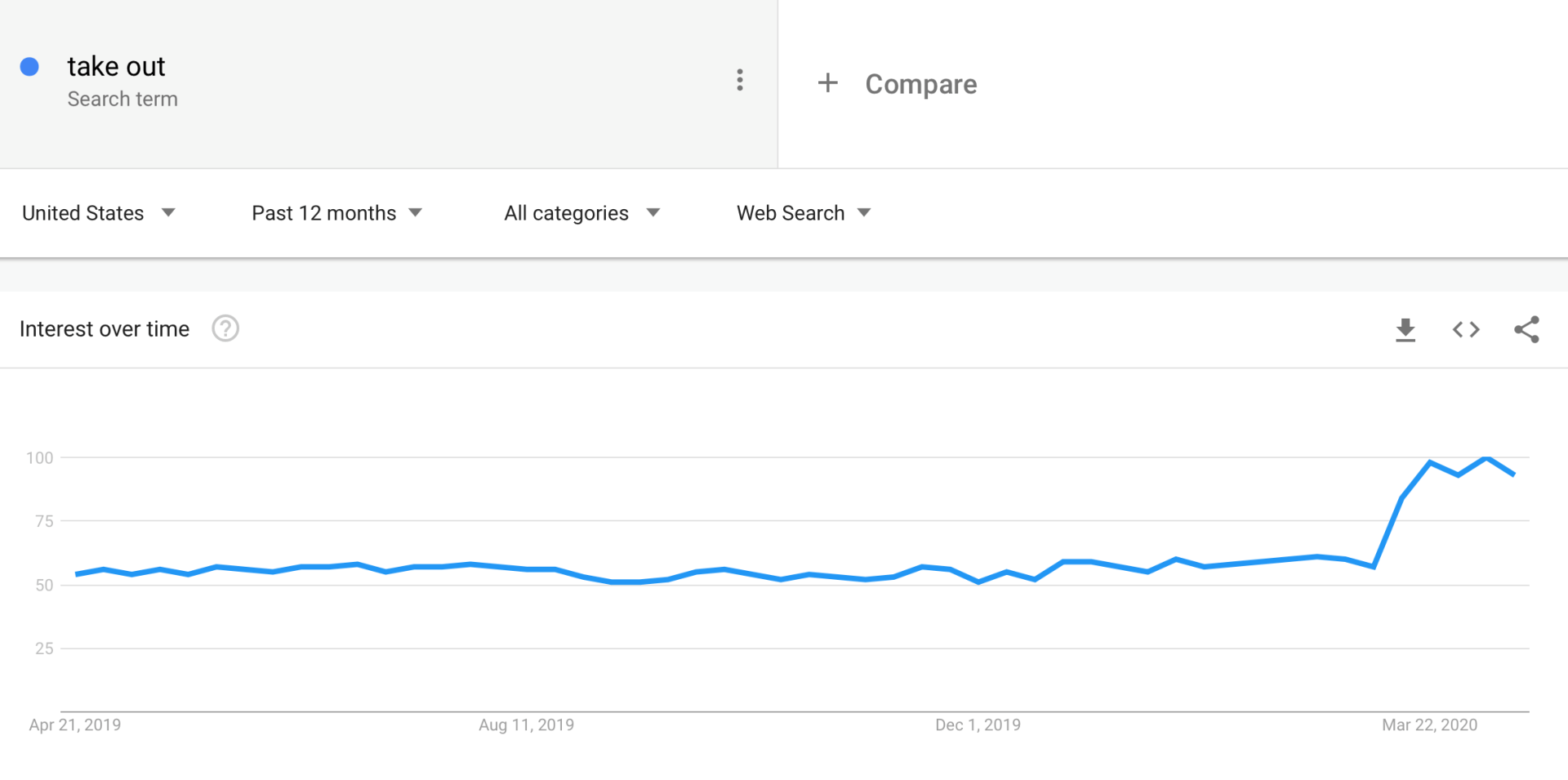This makes sense based on what we expect from daily routines during social isolation. The specific searches have shifted, but the challenges or needs that people are trying to find solutions for are still the same.
When it comes to food, people still need to eat. They are now searching more for convenient at-home options compared to dine-in options.
It’s important to note that while search trends have changed, there hasn’t been a notable difference in volume. People still have to eat, but they are finding their meals from different sources.
Reduced demand for map directions
An interesting trend to note is that there are fewer requests overall for directions. Since there are fewer people leaving their home (and so fewer people driving, walking, transiting or cycling), there is a deceased demand in map searches.
This is not surprising – fewer people are leaving their homes.
According to search volume, there is sustained demand for products and services. But according to map volume, there is reduced demand for directions. People still need the products and services they depend on, but they are choosing alternative means to acquire them.
One major exception over the past few months has been health and medical searches. There has been a significant spike in requests for directions on health and medical topics.
Calls have remained steady
We monitor the calls for our hearing clinics and have not seen a significant reduction in volume of calls. The topics of the calls has shifted (more to sourcing batteries and supplies) but the volume has remained steady.
In markets beyond hearing care, this trend has been very noticeable. The number of searches for directions to services has plummeted, but the number of calls has remained steady – or even jumped.
What hearing clinics can do
In the best of times, local search can be difficult to keep up with. The best practices, tools and search engines are always changing, so local businesses can only keep up by being agile and adaptive.
The speculation and uncertainty of the COVID-19 outbreak contributes to the challenge.
Here’s our suggestions for hearing clinics – during and beyond the coronavirus pandemic.
Don’t ignore your online platforms
If you’re investing money into your digital marketing or waiting until business returns closer to normal, don’t ignore your digital communications. People are still relying on their smartphones and computers to connect them to help for their challenges, and hearing care is no exception.
Keep your website, social profiles and local search directories (most notably Google My Business) updated with the latest details about your clinic.
Answer your phone
While requests for map directions has sharply declined, the dip has been made up for by call volume. People are still seeking hearing products and services, and they are making calls to find a clinic that can provide the care they need.
Be sure the phone number for your clinic is available and clear. And when the phone rings, answer it.
Offer alternatives
Even when most people are staying at home, they are finding creative ways to purchase the products and services that they need.
Consider the sharp rise in grocery deliveries – it is not surprising that grocery store revenue has remained consistent (or even rose) even though fewer people are going to the store. Delivery is a compelling alternative for many people.
Hearing clinics can provide e-commerce stores, digital appointments and other convenient services when in-person appointments are not ideal.







